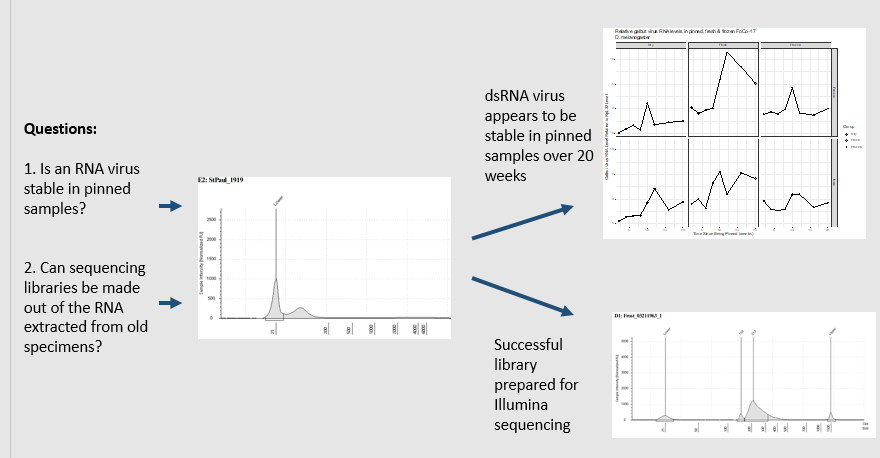CM 793 Presentation Date: December 9, 2021 @ 2:00 PM in Pathology 103
Title: ” Paleo Virology: uncovering the stability of a double stranded RNA virus in Drosophila melanogaster ”
Advisor: Mark Stenglein

CM 793 Presentation Date: December 9, 2021 @ 2:00 PM in Pathology 103
Title: ” Paleo Virology: uncovering the stability of a double stranded RNA virus in Drosophila melanogaster ”
Advisor: Mark Stenglein
ABSTRACT:
Galbut virus was discovered in 2015 in a study surveying the virome of D. melanogaster and has emerged as a candidate for further investigation. Galbut virus is a three-segmented partitivirus that has been found to ubiquitously infect wild D. melanogaster populations and in some cases at even a higher prevalence than the endosymbiont Wolbachia. This virus is vertically transmitted at near 100% efficiency suggesting that it should be approaching 100% prevalence in wild populations. However, this contradicts data suggesting that in a wild population sampled over multiple years, the prevalence of galbut virus is decreasing which implies resistance development by D. melanogaster. Given the fact that galbut virus was discovered six years ago but is found everywhere, I wanted to know how long galbut virus has been infecting D. melanogaster and, where it first arose? To answer these questions, I have taken a two-pronged approach. First, I wanted to know how long a dsRNA virus could be detected in specimens by pinning and freezing samples known to be infected by galbut virus and sampling them at regular intervals for the presence of the virus. Second, I obtained specimens ranging from 15-120 years from entomological collections across the United States. The extraction and qPCR analysis of these samples has suggested that a fraction of samples contain galbut virus RNA. I will confirm these findings using a whole-genome sequencing approach. Due to the large geological and chronological distance between these samples, I believe galbut virus has persisted in D. melanogaster populations over many years and further investigation using whole-genome sequencing is needed to better understand the RNA landscape of old D. melanogaster specimens and what that can tell us about the evolution of galbut virus.
